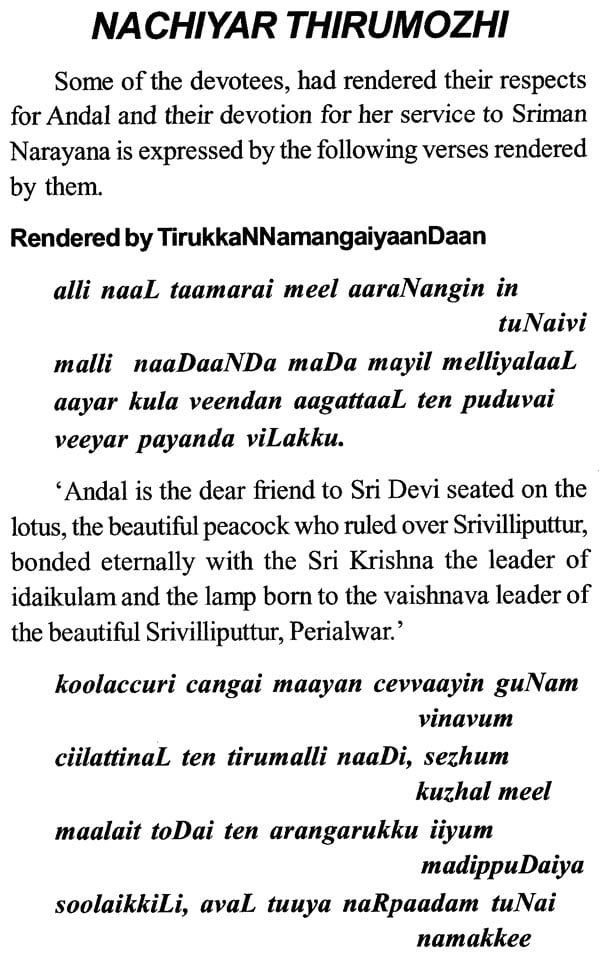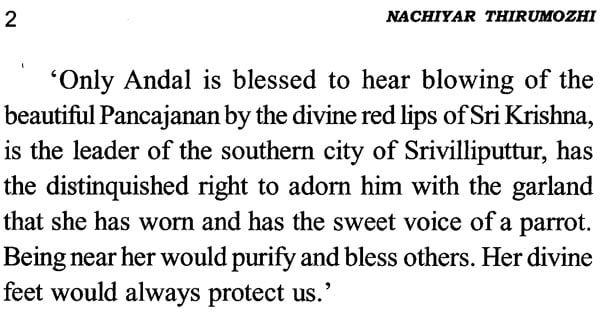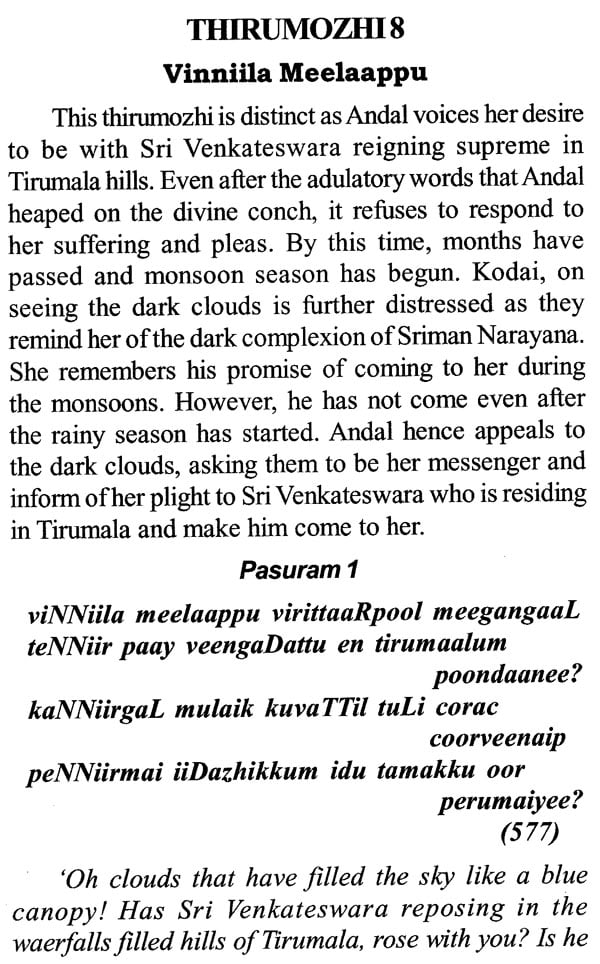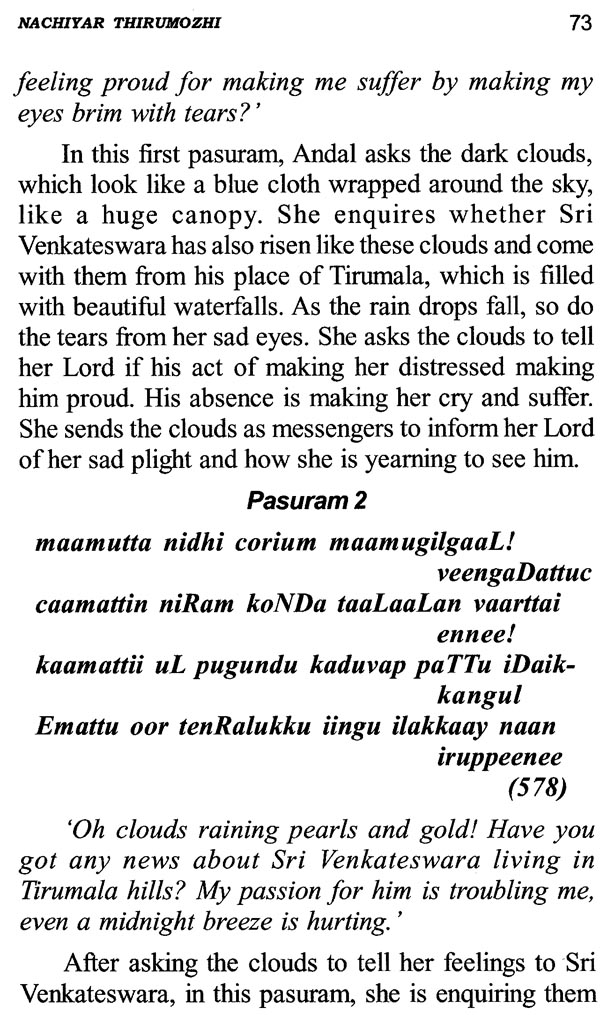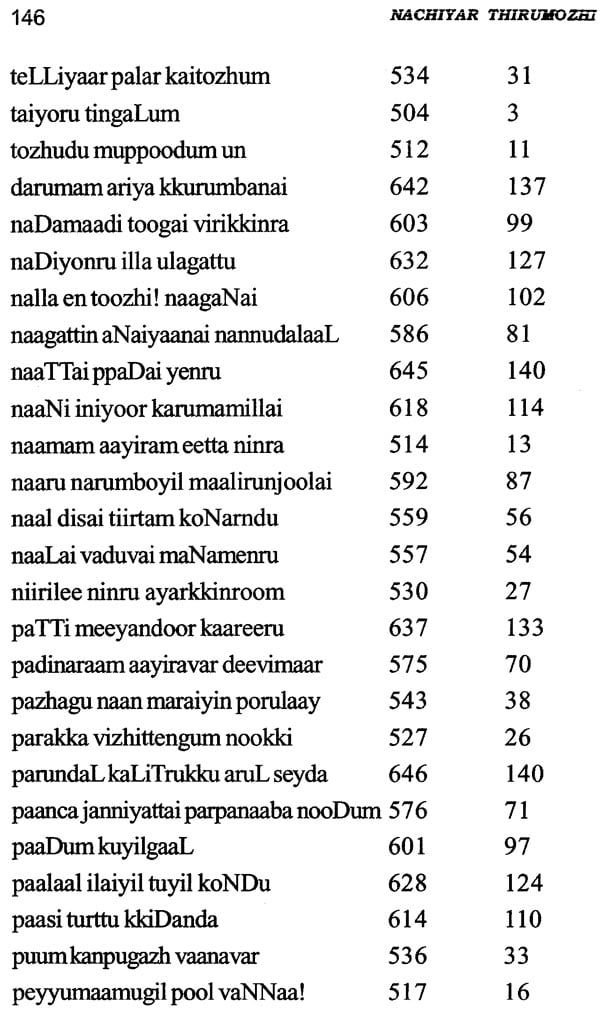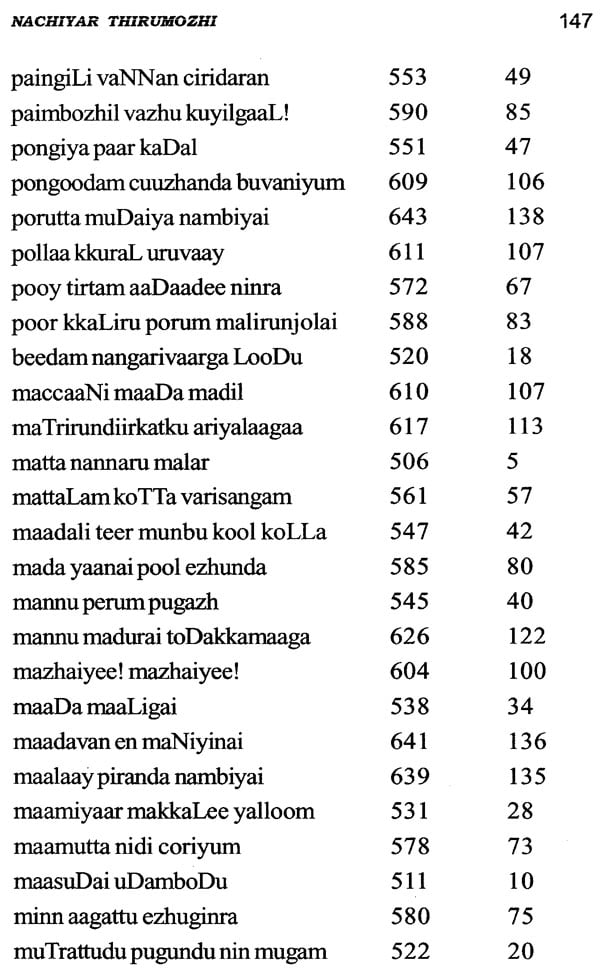
Nachiyar Thirumozhi
Book Specification
| Item Code: | NAW781 |
| Author: | Sripada Divya Nishanth |
| Publisher: | Tirumala Tirupati Devasthanams, Tirupati |
| Language: | English |
| Edition: | 2017 |
| Pages: | 166 |
| Cover: | PAPERBACK |
| Other Details | 8.50 X 5.50 inch |
| Weight | 180 gm |
Book Description
The parsurams in each thirumozhi illustrate in various degrees, the love, suffering and the pangs of separation that she undergoes in her search for ultimate happiness - being united with Sriman Narayana in holy matrimony. Each pastrami is distinct in expressing her feelings. They also articulate the culture and the customs of vaishnavism eloquently. Some of the rituals portrayed in this work are still practiced. In the sixth thirumozhi, Vaaranamayiram' , the wedding rituals are portrayed beautifully in a chronological order in each pastrami. These rituals are followed even in present day Vedic weddings, such are their unique significance.
She envisioned Sriman Narayana not as God but as her consort, with whom she yearned to be with. From the first thirumozhi to the last, her love to be near him keeps intensifying and so does the pain she suffers due to her separation from him. These are depicted distinctly and each thirumozhi is unique with its own theme, such as the eight is about Sri Venkateswara of Tirumala, the fourteenth thirumozhi is about envisioning Sri Krishna in Brindavanam, etc.
Smt. Sripada Divya has accomplished an excellent work of literature. She has written this book in unpretentious words, which can be easily understood by the layman. I am sure this poignant work would have a profound impact on the readers and help them have a deeper understanding and appreciation of Vaishnava philosophy and cultural values. I am confident that readers would find this book interesting and invigorating.
Her works Thiruppavai and Nachiyar Thirumozhi are so rich in their profound devotion to her lord that they are chanted daily in the Vaishnava temples as part of the morning rituals and it is considered auspicious for unmarried girls when they sing her parsurams.
Thiruppavai consists of 30 parsurams, while the other work, Nachiyar Thirumozhi contains parsurams. "Nachiyar Thirumozhi" is a work filled with the divine love that Shri Andal has for her lord. Due to this prodigious work, she was also addressed as: "Our naarpattu muundru uraittaal vaazhiyee".The literate of Nachiyar Thirumozhi are segregated under 14 segments, each segment containing 10 parsurams each, except 4th, 5th and 6th segments, which contain parsurams each. Each segment is called as a "Thirumozhi". Each thirumozhi is named after the first two phrases of the first pastrami in it.
In the first Thirumozhi, "Thaiyoru Thingalum", she Implores Kama Deva, to bring her together with her Lord Sriman Narayana.
"mullum illaa culli erima duttu muyanru unnai noorkinreen kaamadevaa!"
In this Thirutnozhi, she declares that she will do fasting every day in the auspicious month of "Thai" and decorate her humble home and invite Kama Deva, to convey her plight. She describes the various ways in which she would serve him undeterred, till he listens to her plight and relents to her pleas of uniting her with her illustrious Lord.
In the second Thirumozhi, "Naamam-aayiram", she starts the Thirumozhli with the eloquent words "naamam aayiram eetta ninra narayana! naranee!". She beseeches Narayana, the thousand named one. In this stirring Thirumozhi, Kodai, along with the Gopikas, very poignantly expresses the scene, where in when Shri Vishnu entered their homes they didn't observe him, because they were devoutly decorating their home for the visit from Kama Deva. This is the time of the year when Kamadeva grants the wishes for those who pray for him. On seeing their indifference Narayana gets angry on them, and mischievously wipes away the decorations that they had made in their homes. The next pastrami in this Thirumozhi describe how Kodai and the gopikas feel sorry, when Krishna destroys their decorations and the mud houses they had built to pray to Kama Deva. They eloquently beg for him to stop that act. This Thirumozhi ends with a very beautiful paasuram, where in Andal explains that whoever sings these, will attain Sri Vaikuntham.
Book's Contents and Sample Pages
